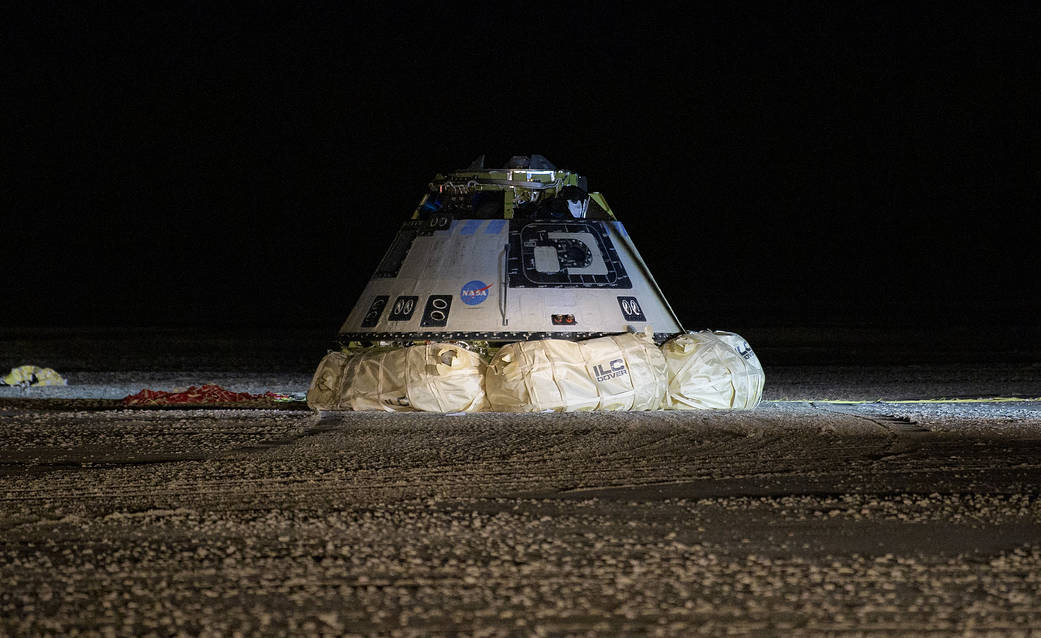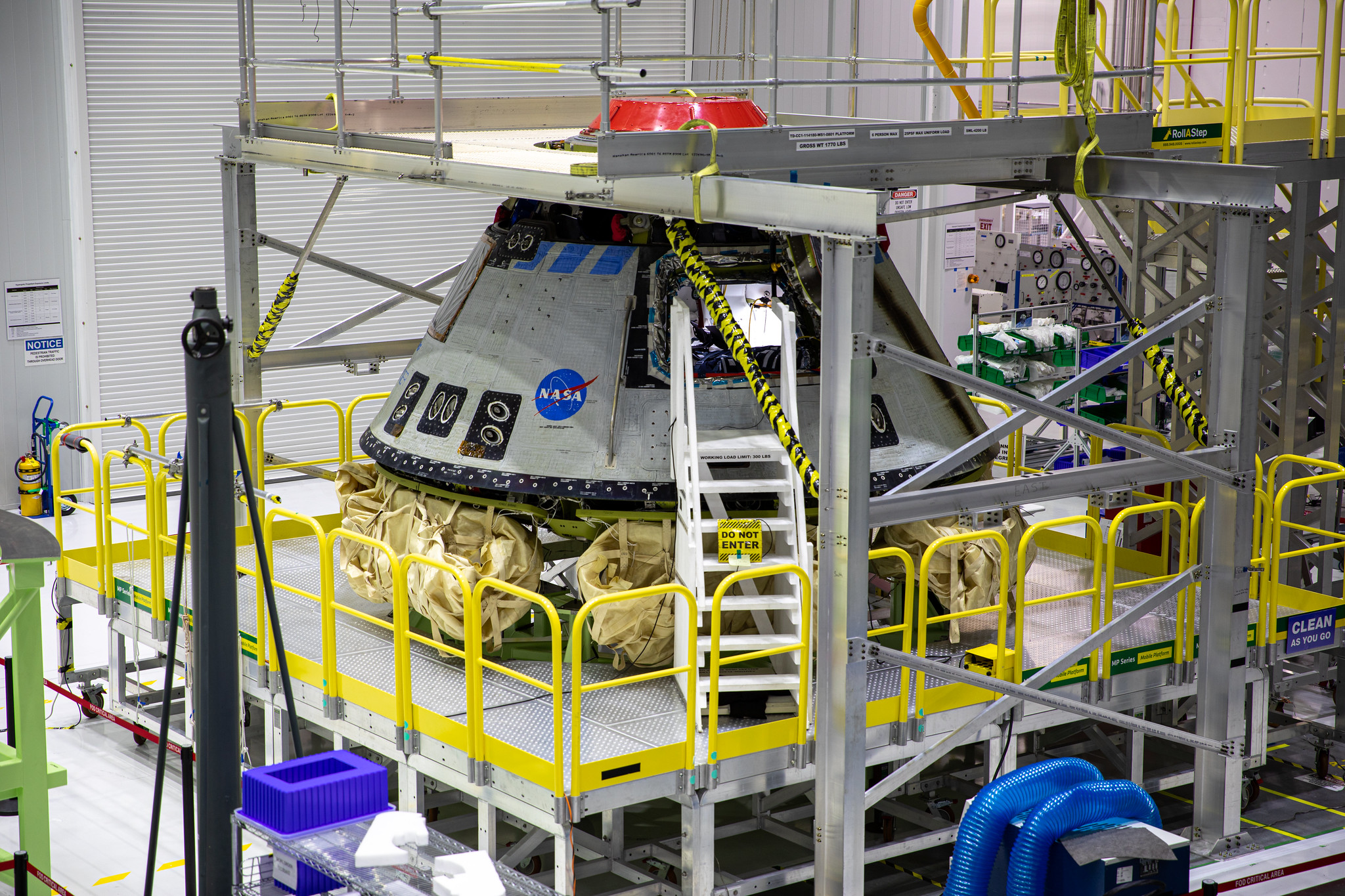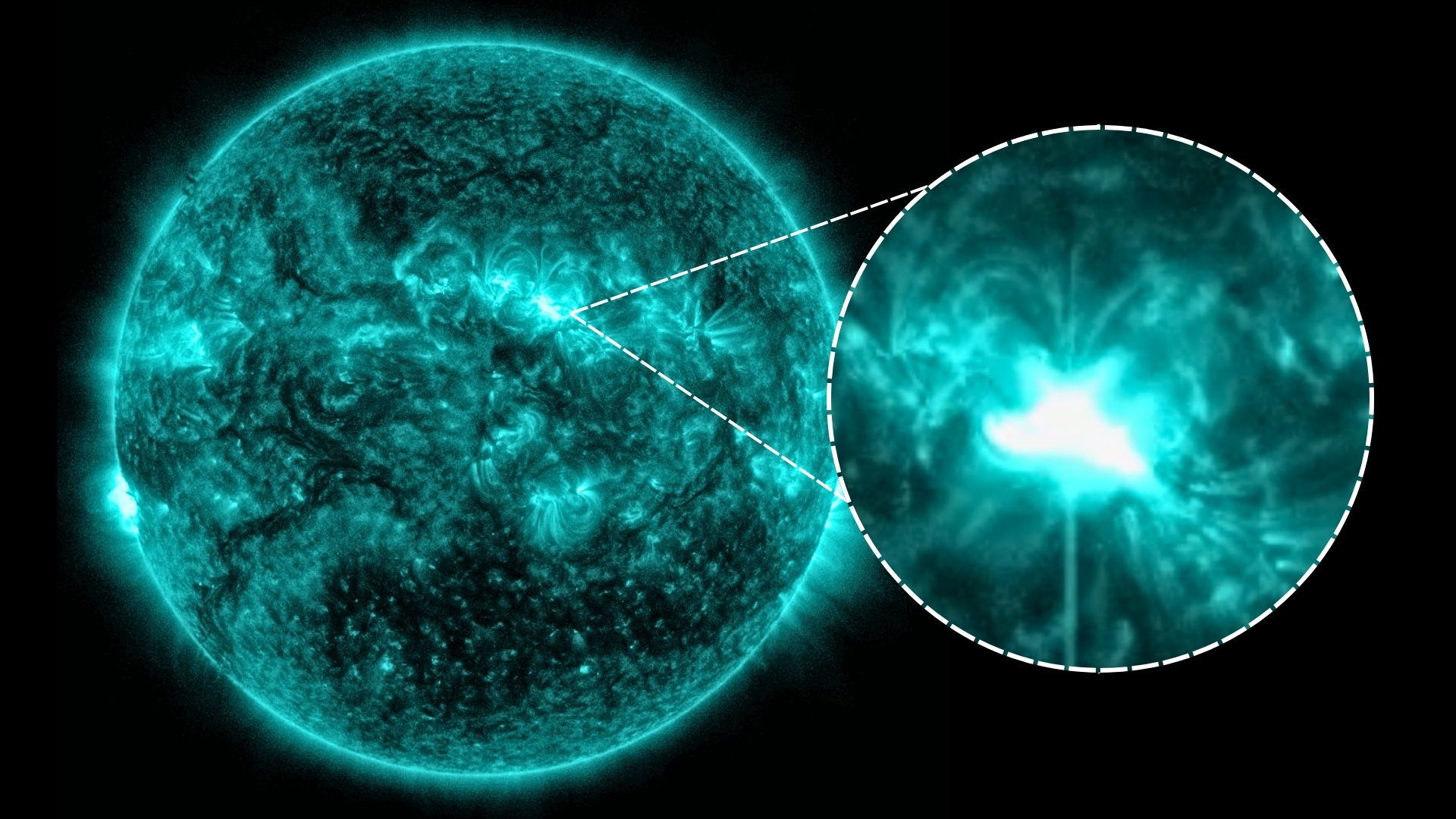NASA completes investigation on flawed Boeing Starliner capsule test flight
But we still don't know when Starliner will fly again.

NASA has completed its investigation into Boeing's problematic first test flight of a Starliner crew capsule as the company and agency look toward a second test flight sometime this year.
The commercial crew vehicle, which Boeing developed for NASA to ferry astronauts to and from the space station, made its orbital uncrewed debut in December, lifting off from the Cape Canaveral Air Force Station in Florida. But the craft failed to reach the orbiting laboratory due to a series of glitches and software issues, an independent review team found.
Earlier this year, a NASA review of the flawed test flight identified 61 "corrective actions" for Boeing to address on Starliner. On Tuesday (July 7), NASA announced that that number has swelled by another 19 corrections, for a total of 80, after a second review.
The announcement came in a teleconference update with reporters on the test flight, called Orbital Flight Test 1 (OFT-1), as Boeing prepares for a do-over mission, OFT-2, later this year.
Related: Boeing's 1st Starliner flight test in photos
Boeing announced in April that it will conduct a second uncrewed flight test with Starliner to demonstrate that the spacecraft is safe and reliable before any astronauts ride it to space. However, a launch date for that OFT-2 mission has not yet been set. But the flight is likely to happen "toward the latter part of this year," Steve Stich, manager of NASA's Commercial Crew Program, said in Tuesday's teleconference.
"Today, we're sort of turning the page a bit from the investigation phase of OFT and moving into our hardware development," Stich said. "The spacecraft is coming along very well."
In February and March, NASA and Boeing revealed the results of separate investigations into two major anomalies that led to the partial failure of the OFT mission. First, Starliner's onboard timer drew an incorrect time from the Atlas V rocket shortly after it launched, and consequently, the spacecraft didn't execute the orbit insertion burn needed to reach the space station. The second major problem was a valve-mapping error with the software that controls Starliner's thrusters, which could have led to an in-space collision.
Breaking space news, the latest updates on rocket launches, skywatching events and more!
Related: Boeing defends Starliner space capsule ground tests after debut flight
NASA and Boeing announced this week that they have now also wrapped up a separate investigation into a third major anomaly, which led to a temporary drop in communications between Starliner and ground control crews during the mission's launch. That brief glitch left mission control unable to manually command Starliner to do the orbit insertion burn after the onboard timer issue prevented it from happening automatically.
"As we started to look at the data from the flight and why we didn't get a good forward communication link with a spacecraft, what we found was that the system perhaps allowed a little bit too big of a band of frequencies to come in to the transceiver itself," Stitch said.
"What Boeing has done to fix that and mitigate that problem is actually installing a filter, which essentially only allows the receiver to listen to a very narrow band of frequencies with the Tracking and Data Relay Satellite," he added. (NASA's Tracking and Data Relay Satellites, or TDRS, allow ground controllers to communicate with spacecraft.)
Video: Boeing gives Starliner capsule parachutes a workout in drop test

While investigating the first two anomalies earlier this year, the joint NASA-Boeing review team came up with the initial list of 61 corrective actions to implement before Starliner can fly again. But with the recent completion of the investigation into the communications problem, as well as what NASA calls a "high-visibility close call" investigation, that list has now grown to 80 recommendations, Kathy Lueders, NASA's chief of human spaceflight, said in the teleconference.
NASA and Boeing have not made the complete list of recommendations public due to concerns over releasing "proprietary data," Leuders said. But NASA did provide a list of categories and numbers of recommendations in a statement.
Thirty-five of the recommendations pertained to process and operational improvements, 21 of them deal with testing and simulations, 17 are related to software updates and requirements and seven are in a category that includes hardware modifications and other organizational changes.
The high-visibility close call investigation was meant "to specifically review the organizational factors within NASA and Boeing that could have contributed to the flight test anomalies," NASA officials said in the statement. "The close call investigation team, established in March, was tasked with developing recommendations that could be used to prevent similar close calls from occurring in the future."
"NASA and Boeing have completed a tremendous amount of work reviewing the issues experienced during the uncrewed flight test of Starliner," Steve Jurczyk, NASA's associate administrator, said in the statement. "Ultimately, everything we've found will help us improve as we move forward in the development and testing of Starliner, and in our future work with commercial industry as a whole."
Email Hanneke Weitering at hweitering@space.com or follow her @hannekescience. Follow us on Twitter @Spacedotcom and on Facebook.
Join our Space Forums to keep talking space on the latest missions, night sky and more! And if you have a news tip, correction or comment, let us know at: community@space.com.

Hanneke Weitering is a multimedia journalist in the Pacific Northwest reporting on the future of aviation at FutureFlight.aero and Aviation International News and was previously the Editor for Spaceflight and Astronomy news here at Space.com. As an editor with over 10 years of experience in science journalism she has previously written for Scholastic Classroom Magazines, MedPage Today and The Joint Institute for Computational Sciences at Oak Ridge National Laboratory. After studying physics at the University of Tennessee in her hometown of Knoxville, she earned her graduate degree in Science, Health and Environmental Reporting (SHERP) from New York University. Hanneke joined the Space.com team in 2016 as a staff writer and producer, covering topics including spaceflight and astronomy. She currently lives in Seattle, home of the Space Needle, with her cat and two snakes. In her spare time, Hanneke enjoys exploring the Rocky Mountains, basking in nature and looking for dark skies to gaze at the cosmos.
-
Geomartian The travel insurance kiosk at Boeing headquarters was unplugged after somebody insured themselves for a billion dollars.Reply
Your Siamese cat gives you a deep formal bow before you leave for your test flight.
Drinking a cup of Sake becomes a ritual before boarding a Boeing Starliner. -
Frank Furillo Boeing needs be broken apart. Its management team needs be investigated for 3rd degree murder or manslaughter for its intentionally negligent, cost cutting operations that have resulted in hundreds of deaths with indifference and depravity. The conscious and unabashed move from a safety first, engineering company to a safety last, accountant run company is criminal.Reply -
ScottM Why is crappy Boeing getting any more taxpayer money for manned spaceflight??? They LOST. SpaceX has done it and we don't need Boeing continuing to try to put 737Max in space. What a waste of money!Reply -
Frank Furillo Reply
Ah, yes. Lots of Sake before committing suicide in a Boeing capsule, aircraft or anything made while the McDonald-Douglass accounting team has been in charge of their murder for profit scheme.Geomartian said:The travel insurance kiosk at Boeing headquarters was unplugged after somebody insured themselves for a billion dollars.
Your Siamese cat gives you a deep formal bow before you leave for your test flight.
Drinking a cup of Sake becomes a ritual before boarding a Boeing Starliner. -
_JOHN_ Reply
Oh my, how... quaint, is that a recycled Apollo capsule?Admin said:NASA has completed its investigation into Boeing's problematic first test flight of a Starliner crew capsule as the company and agency look toward a second test flight sometime this year.
NASA completes investigation on flawed Boeing Starliner capsule test flight : Read more -
AirFrank Boeing has lost their major engineering talent through retirements, etc. They don't have a mentoring program so every job is a Learn On The Job task. Sad to see a company with such a great history go down the crapper.Reply -
Old Space nut ReplyScottM said:Why is crappy Boeing getting any more taxpayer money for manned spaceflight??? They LOST. SpaceX has done it and we don't need Boeing continuing to try to put 737Max in space. What a waste of money!
That's not a bad question but the answer is:
Because we need more than ONE way to space. A problem like this occurs grounding a single craft and we are left scrambling to have access. With multiple paths to space the grounding of any single craft is not nearly so large a problem. And yes, we still have access through the Russians and we should maintain that access as well by continuing to buy seats on their launches or trading seats on our craft for seats on theirs making it clear that if they have a problem we will provide them continued access as they have done for us.
